In this tutorial, we will give a quick start guide on how you can communicate with the Tabor AWG using Standard Commands for Programmable Instruments (SCPI). SCPI commands are an ASCII-based set of commands for reading and writing instrument settings.
In order to control instruments using MATLAB, the instrument control toolbox is required. Please note that the Instrument Control Toolbox is an additional application that needs to be added. For more information you can visit the Mathworks website.
For this tutorial, we will use MATLAB version R2014a 32bit and a USB interface. To ensure you successfully established all the necessary settings for remote control over the Tabor instrument using LAN/USB/GPIB, please go over the connectivity tutorialson the Tabor’s website.
- To connect and control the Tabor’s Instrument using the Test & Measurement Tool
1. Set the USB/LAN/GPIB as the remote interface, using the Tabor’s front panel buttons. To do so, go to: “Utility”->”Remote Interface”->”Select Interface”->”Control from Interface”. Press Enter to select the active Interface you need. Wait for the answer “Done”. We chose to demonstrate using USB.
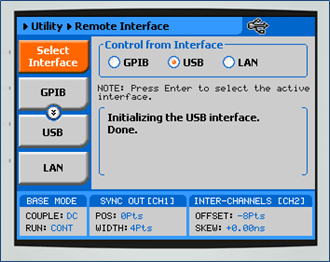
2. Once the MATLAB is up and running, type “tmtool” on the command window to open the Test & Measurement Tool.
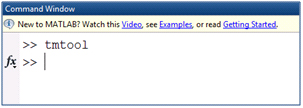
A new Test & Measurement Tool dialog box opens up:
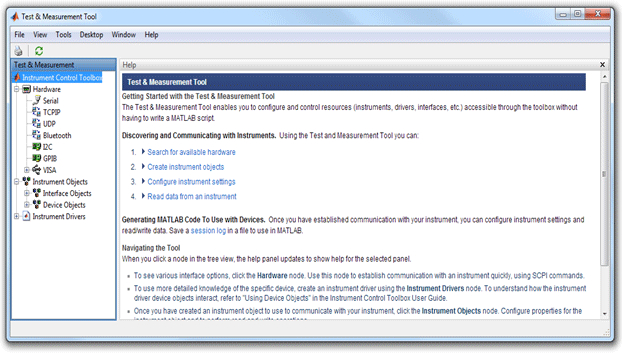
3. On the left window, one may choose which interface to communicate through with the Tabor AWG.
a. If you would prefer not to work with VISA, you could choose to communicate through TCPIP by right
clicking on “TCPIP” and adding new TCPIP instrument:
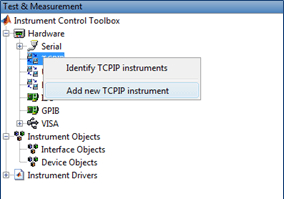
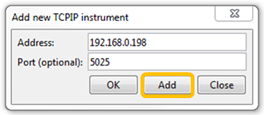
After doing so, extend “TCPIP” and choose the Tabor AWG’s IP address. The communication dialog box will
appear.
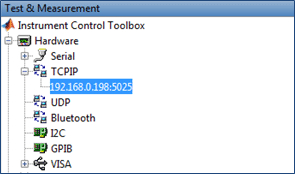
b. If you prefer working with VISA, you could connect trough TCPIP by extending “VISA”, right click on
“TCPIP(VXI-11)” and scan for TCPIP instruments using VXI-11 auto detection.
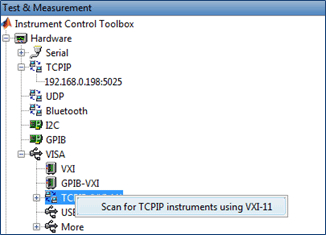
c. If you would prefer working with VISA trough USB, just click on VISA to extend VISA->USB & scan for the
USB address of the Tabor device:
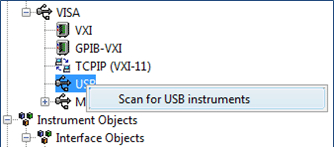
Through all of the interfaces you will communicate with, you will use the same dialog box. From here after, we will demonstrate how to connect & send SCPI commands using the USB interface:
4. Click on the Tabor address to open a communication dialog box with the device. Click on the “Connect” button as shown below:
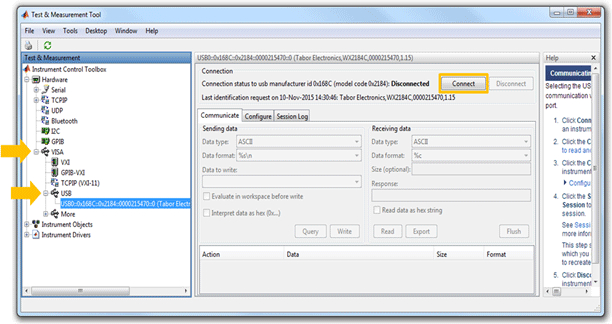
5. Send “*IDN?” Query to check the connection, information identify Tabor’s Model should come up as a new action line:
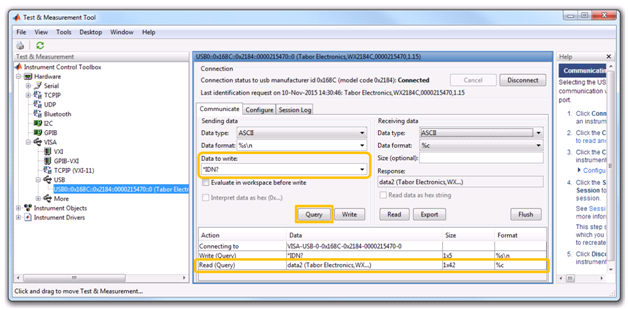
6. Here is a short basic example of how to set a 50MHz, 2Vp-p square waveform in standard mode, just to get the feel of how to communicate using SCPI commands:
a. Type ‘:RESET’ and press the ‘Write’ button.
b. Type ‘:INST CH1’ and press the ‘Write’ button, to set Channel 1 as the active channel.
c. Do the same with ‘:FREQ 50e6’ and ‘VOLT 2’ to set the frequency and amplitude.
d. Type ‘:FUNC:SHAP SQU’ and press the ‘Write’ button, to change to Square waveform.
e. Type ‘:OUTP ON’ and press the ‘Write’ button to open channel 1.
f. Press the ‘Disconnect’ button.
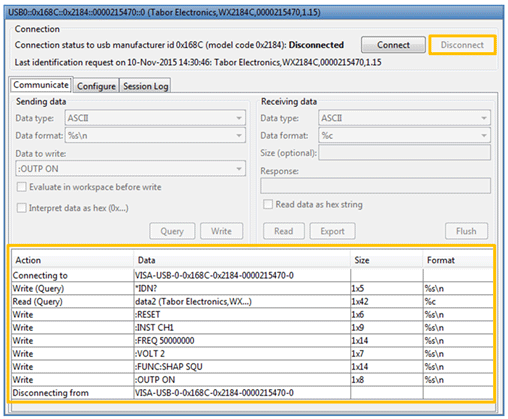
Each time you press the ‘Write’ button, the command you write to the instrument is also saved as an Action line that can be used later as part of a MATLAB script for automation purposes.
7. As can be seen on scope, a 50MHz 2Vp-p square waveform was created:
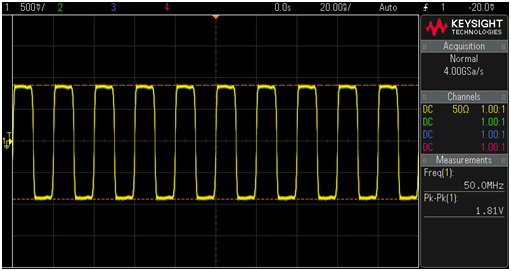
The outputted 50MHz 2Vp-p square waveform.
8. In order to save this process as a MATLAB code, go to ‘Session log’, where you will see that all the actions you have made were automatically translated into MATLAB code. Press the ‘Save Session’ button.
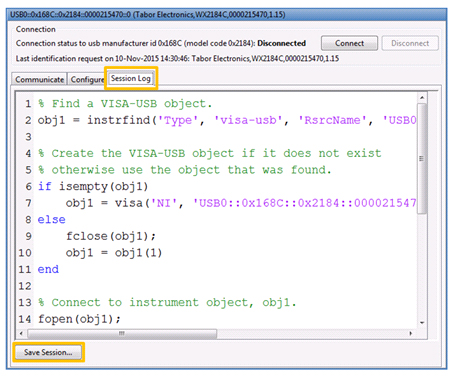
And Save your session as a MATLAB script:
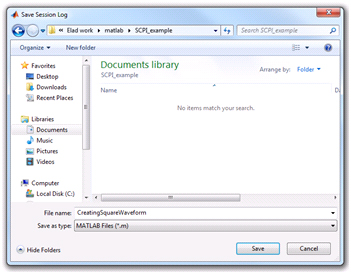
9. After saving the session as a ‘*.m’ file, you can run it through your MATLAB command window as a script.
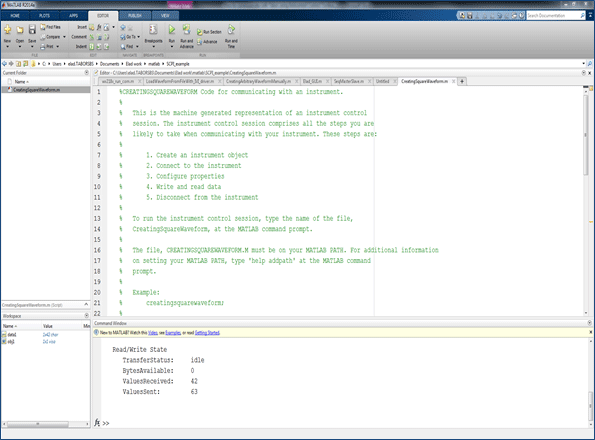
For a list of the SCPI commands, you can use to control the AWG with, go to the Programming Reference chapter in the Tabor AWG’s User Manual.
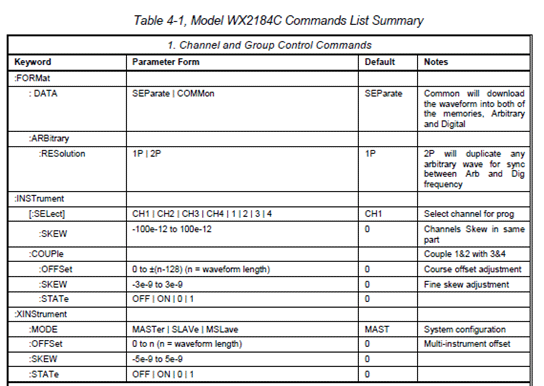
The User Manual can be downloaded from the Tabor website (you must be registered first):
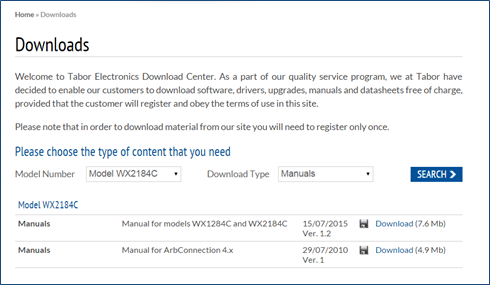
In the next tutorials of the series “How to Control Tabor AWGs Using MATLAB”, we will show how to communicate with the Tabor AWG using the IVI driver functions, followed by four practical MATLAB coding examples.
For More Information
For more of Tabor’s solutions or to schedule a demo, please contact your local Tabor representative or email your request to [email protected].